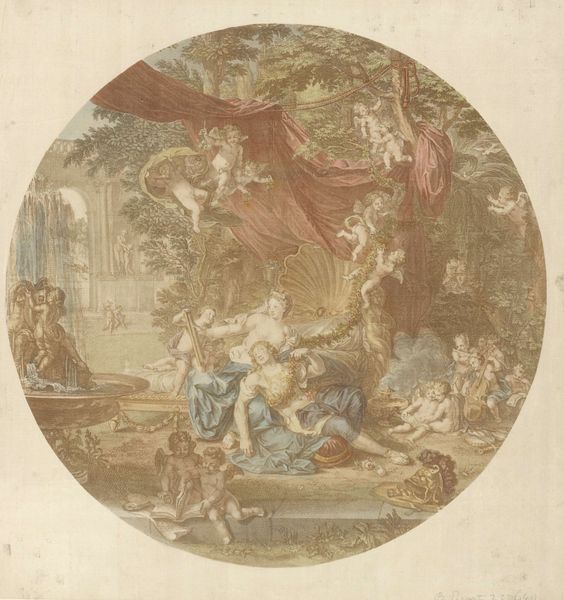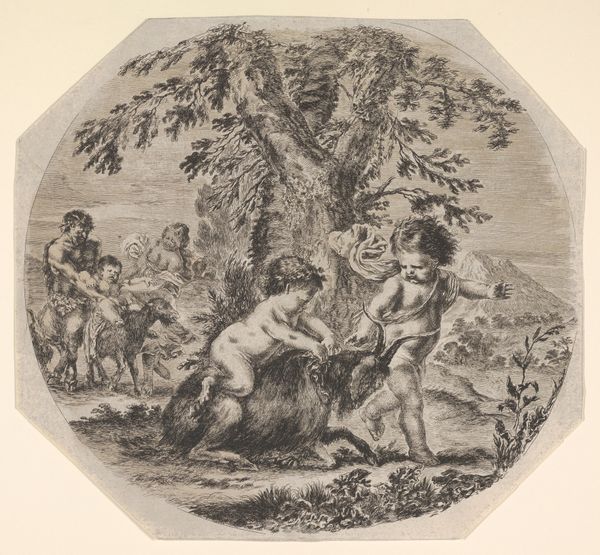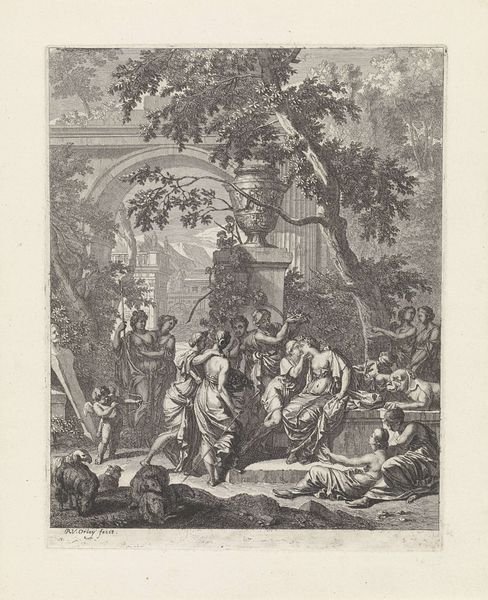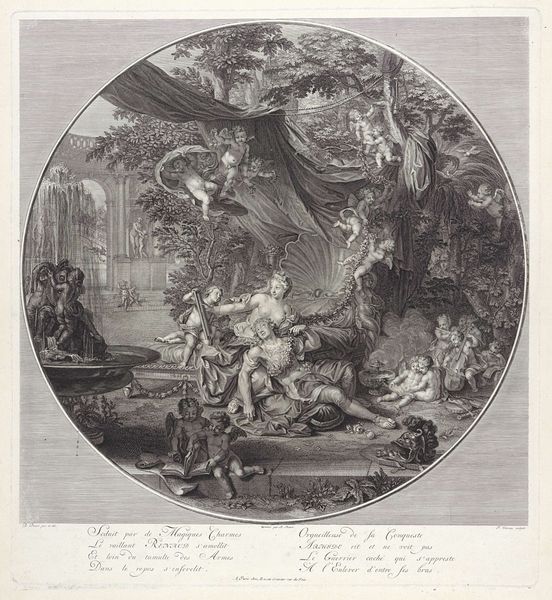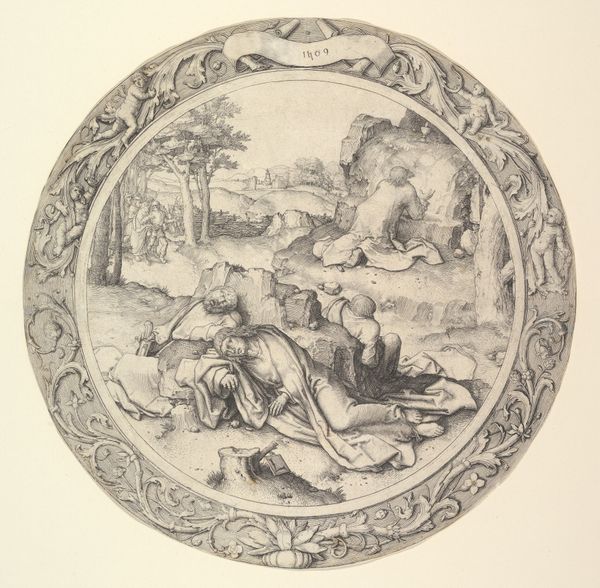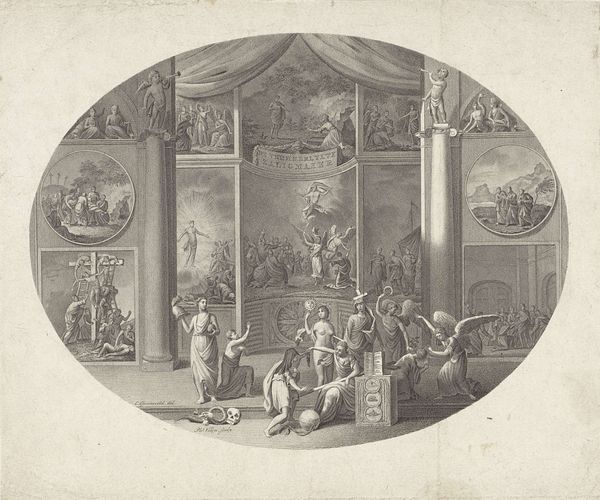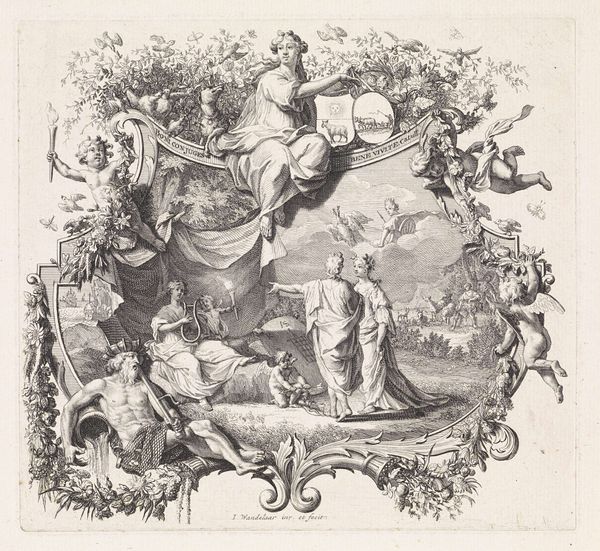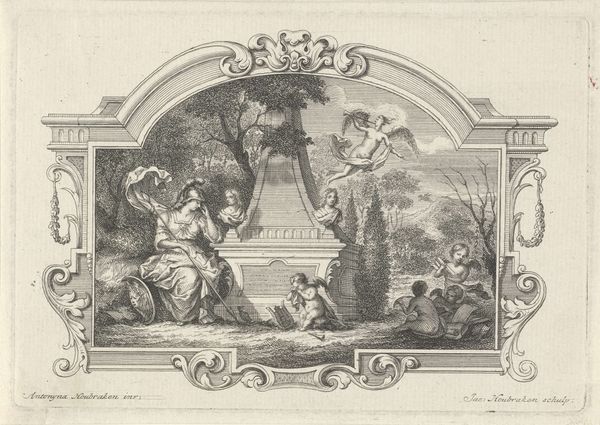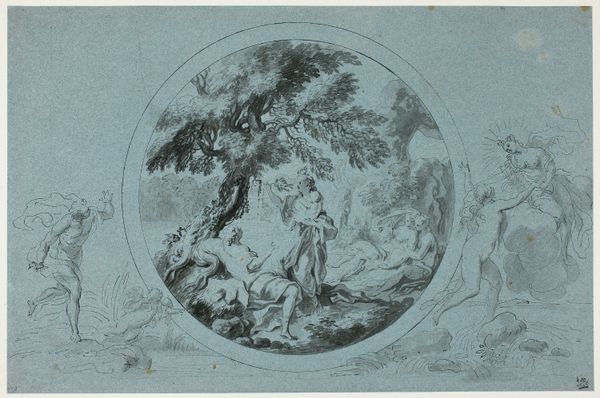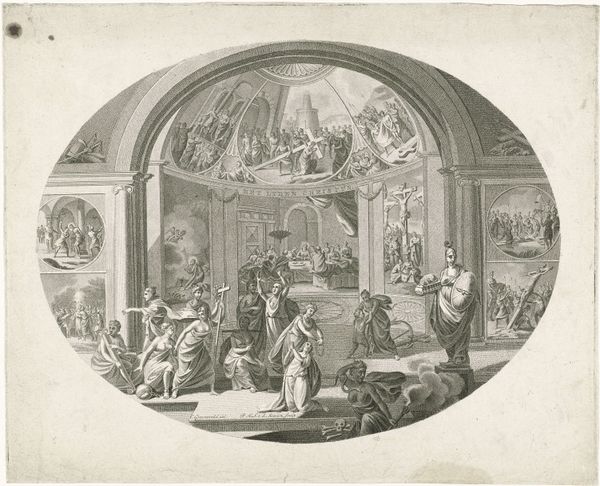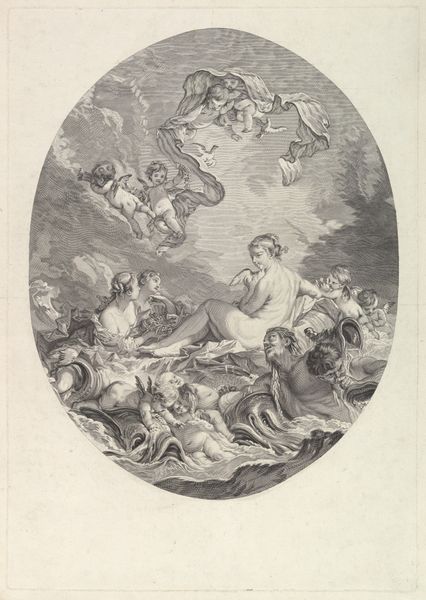
drawing, ink, pen
#
drawing
#
allegory
#
baroque
#
landscape
#
charcoal drawing
#
figuration
#
ink
#
pencil drawing
#
pen
Copyright: Rijks Museum: Open Domain
Editor: Here we have "Rinaldo en Armida," a drawing from somewhere between 1683 and 1733 by Bernard Picart, housed here at the Rijksmuseum. It's quite elaborate, filled with figures. I'm struck by the sheer density of the composition and all the allegorical references. What do you see in this piece, considering its place in history? Curator: What strikes me is how Picart uses the visual language of Baroque art to represent complex political ideas. Think about the public role of imagery at that time. The "Rinaldo and Armida" story, pulled from Tasso's epic poem, wasn't just about romance; it was about duty versus desire, temptation, and ultimately, perhaps, the right use of power. The lavish detail – the cherubs, the drapery – would have been instantly recognizable to an educated 18th-century audience as signifiers of wealth and authority, but perhaps with a touch of self-aware irony? Editor: So, you’re saying the abundance isn't just decorative, it is about the construction of power at the time? Are the museums or the Rijksmuseum having something to do with this ? Curator: Exactly! And consider where something like this might have been displayed originally, and for whom. It likely wasn't created for a truly "public" audience in the modern sense. It was for elite consumption. Did it celebrate power? Critique it subtly? Was it reinforcing certain political messages through allegory, especially to those with social visibility and political connections at that time. That's what interests me. Editor: That adds another layer to my understanding. I hadn't considered how the artistic style itself played a role in reinforcing a specific societal and cultural narrative. Curator: It's all about considering art not as isolated creations, but as active participants in social discourse, revealing to us the public roles played by images in the past. Editor: Fascinating! Now I'm looking at the Baroque style with a fresh perspective, not only regarding "Rinaldo and Armida," but within history in general!
Comments
No comments
Be the first to comment and join the conversation on the ultimate creative platform.
